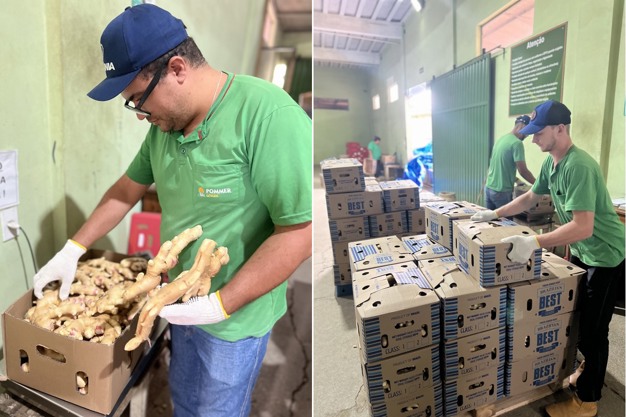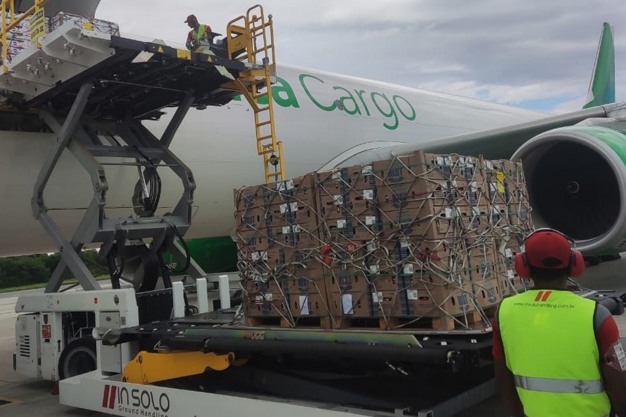Ginger supply in North America is shipping largely out of China right now. "Peruvian ginger is coming to the end of the season. There was some supply from Central American countries," says Frederico Stuhr of Pommer Fresh Foods. "With all of that though, there is still some room for Brazilian ginger."

He notes that Brazil is shipping young ginger, which has a shorter shelf life, and it's being sent via air. Pricing near the end of the Peruvian season had increased which helped make room for air-flown Brazilian ginger in small quantities. The Brazilian season, which is expected to start on time thanks to good growing conditions, will begin in June-July and go until November-December, depending on the supply. "We'll evaluate closer to the season but we anticipate a very good crop with good quality," he says.
That said, demand is on the softer side for ginger currently. Usually, when Chinese ginger enters the market, it generally is enough to fill the demand. "We could have been selling more but we aren't because of the Chinese supply," Stuhr says, noting the market is being divided into two segments: Chinese ginger and non-Chinese ginger for more price-driven customers.
Consumption up
While demand for ginger is stronger during colder months, which are winding down now in North America, 2023 overall saw a high demand for ginger says Pommer's Apanatche Bark. "Not as much from Brazil because it was more expensive. However there was a lot of ginger at high volumes exported to the U.S. from Peru," he says. Ample supply from both Peru and China helped boost ginger consumption throughout the year and that includes possibly Peruvian ginger directed to ginger byproducts such as powders and ginger shots.

As for pricing, while Peruvian ginger pricing is strong, Brazilian, even with air-flown product, is affordable in the market. "However we have a very high trade cost which can impact overall pricing. For the season, if we can keep the F. O. B. price on this level in Brazil, we should have good movement," says Stuhr. Chinese ginger pricing isn't as strong as Peru or Brazil pricing.
In company news and ahead of the Brazilian season, Stuhr is also relocating to the family-owned company's Brazilian operations. "I'll be in charge of the operations there so we can control the quality," he says, noting he will also work on the company's plans to develop ginger by-products such as teas, dried powders and more with its first product possibility being introduced this year. He will also be helping develop the company's organic ginger production.
 For more information:
For more information:
Apanatche Bark
Pommer Comercio Internacional Ltda
[email protected]
Frederico Stuhr
Pommer Comercio Internacional Ltda
[email protected]
www.pommerfreshfoods.com










